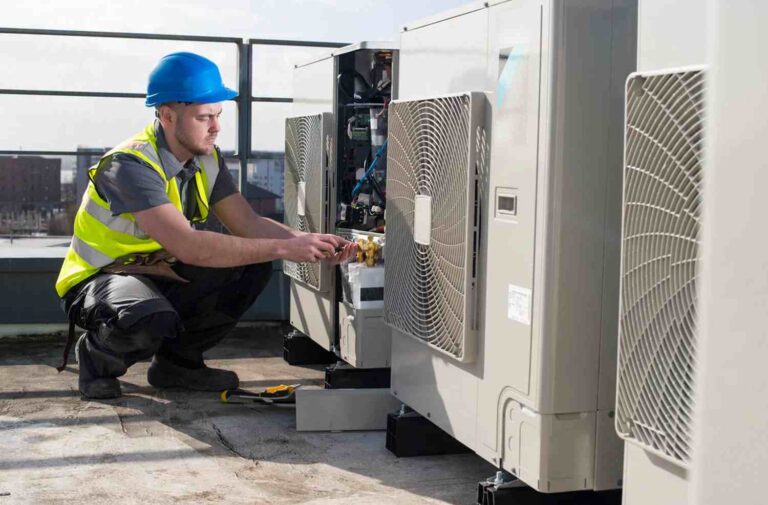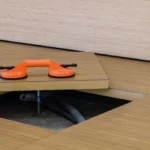There’s no denying that HVAC systems are a major source of comfort in any building.
For most property owners, HVACs are another useful but complicated electronic device that often remains out of sight and out of mind.
But HVAC technicians know that these systems, when well-maintained, offer more benefits home than just comfort.
As such, they understand why accessing specific HVAC parts is important.
Enter HVAC access doors.
These easy-to-forget panels offer convenient entry for repairs, inspections, and routine maintenance.
This helps improve energy wasting, save costs, and keep these systems working well for a long time.
Let’s discuss it.
What Are HVAC Access Doors?
First things first, what exactly are HVAC access doors? They are sealed openings that provide entry to HVAC systems so technicians can service or repair them.
They’re normally placed on ductwork, air handlers, or equipment housings.
With HVAC access doors, technicians don’t need to tear apart entire system sections.
These doors come in different forms.
These include simple insulated panels, special doors for coils or filters, or fire-rated doors. Each one serves a different purpose.
The importance of these doors, however, goes beyond providing access.
A well-installed access panel promotes energy efficiency in homes and commercial interiors, resulting in huge savings on energy bills.
On the other hand, a poorly sealed door has the opposite effect: it drains energy.
How HVAC Access Doors Improve Commercial and Residential Spaces
Now, let’s get into the nitty-gritty of how these access doors and panels help property owners save on energy costs.
Ensuring Proper Sealing and Insulation Around HVAC Access Doors
This could be the most important benefit. Imagine trying to heat a space, but one window is cracked open. It’s a losing battle, right?
The same principle applies to HVAC access doors.
If they aren’t sealed tight and insulated, conditioned air will escape and unconditioned air will seep in.
As a result, the HVAC system will work overtime, use more energy, and drive up utility bills.
Professional HVAC technicians should look for insulated access panels with quality gaskets.
Sealing tapes and mastic sealants are also useful during installation to seal any remaining gaps or during regular checks to repair worn-out seals.
Simplifying HVAC System Maintenance for Optimal Performance
HVAC access doors provide convenient access, making maintenance less of a chore.
Cleaning evaporator coils, changing filters, or inspecting fan motors all become simple tasks.
The result?
Property owners can schedule more frequent maintenance visits, because they know how easy and quick these will be.
Nothing gets taken apart, and technicians don’t have to work overtime.
HVAC systems then operate at their best and consume less energy.
Extending the Life of HVAC Systems
HVAC systems that receive regular care experience less strain and wear over time, extending the equipment’s life.
For equipment with expensive parts, like furnaces, air conditioners, and heat pumps, this is a huge cost benefit.
Apart from cost savings, it’s also an indirect but significant long-term energy benefit.
Neglected systems often see a dramatic drop in efficiency long before they fail.
During this time, they silently cost property owners more each month.
Reducing Energy Costs Through Preventive Maintenance
This benefit ties everything together. HVAC access doors provide easy access, which encourages proactive maintenance.
As such, technicians catch problems before they fester, preventing expensive repairs down the line.
For example, detecting a refrigerant leak early or spotting a dirty coil before it affects efficiency can save property owners significant energy bills.
Regular maintenance, made possible by proper access, can lead to long-term energy cost savings.
Improving Airflow by Reducing Obstructions
While the access door isn’t an obstruction, the lack of one can lead to hidden issues that block airflow.
Issues like accumulated debris, collapsed ducts, or misaligned dampers can be hard to spot without proper visibility.
Here’s why it’s important to spot airflow issues early.
Restricted airflow forces the fan motor to work much harder.
This leads to increased energy consumption and premature wear on components.
But with easy access, technicians identify and fix common airflow issues faster so the system runs well.
Future-Proofing With Proper Access
HVAC technology keeps advancing, and systems are getting more complex. For instance, some now have advanced sensors, parts that can change speed, and detailed controls.
Easy access helps property owners keep up with these upgrades.
If any parts need to be replaced with upgraded versions in the future, there will be no need to demolish HVAC parts.
Making proper access doors a priority now prepares a home’s HVAC setup for the future.
Keeping Up With Industry Standards
Building rules and industry standards encourage good access for system checks and maintenance.
Installing access doors helps stick to the highest installation and service system standards.
So, it’s not only about saving money right away; it’s about the long-term well-being, dependability, and value of a home’s HVAC system.
HVAC Access Door Best Practices and Recommendations
Here’s how to ensure HVAC access doors help with energy efficiency:
Proper Selection and Installation
It starts with choosing the right door for the job.
Choose the correct size and check for important insulation and airtight sealing features.
Next, a high-quality HVAC door is only as good as its installation, so this process needs to be precise.
Apply appropriate sealants and securely fasten the door to prevent potential air leaks.
Regular Inspection and Maintenance of Access Doors
When inspecting the HVAC parts, don’t forget also to check the access door itself.
Check the door’s gaskets, test the latches for secure closure, and look for any signs of insulation degradation.
A worn gasket or a loose latch can compromise the system’s efficiency. Be ready to repair or replace components as needed.
Property-Owner Empowerment
Many property owners may not understand why access doors are important.
Explain the purpose of HVAC access doors and how they contribute to a space’s comfort and lower utility bills.
Empower them to see these doors as a way to improve the life of their HVAC systems.
Help them see access doors and panels as part of a professionally installed and maintainable system.
Conclusion
HVAC access doors improve energy efficiency in commercial, industrial, and residential spaces.
By ensuring easy access, they also help maintain these systems, enhancing their functionality.
HVAC professionals and technicians should ensure they choose the right panel, install it well, and perform regular checks.
These all help extend the life of this expensive equipment and save overall costs.



